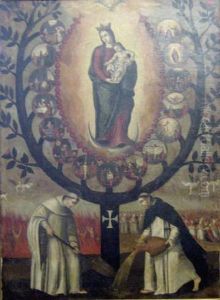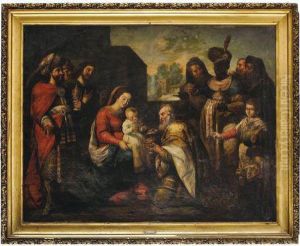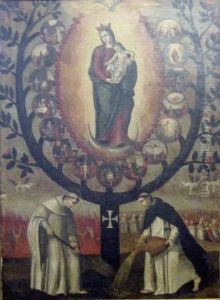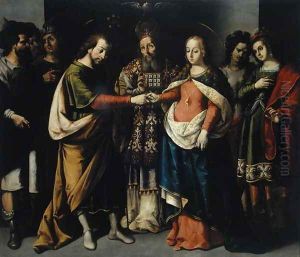Jose Juarez Paintings
Jose Juarez was a notable Mexican painter during the colonial period, born in Mexico City in 1617. He emerged from a family of artists, which included his father, the painter Luis Juarez, and later on his own children, who also pursued painting. His family's artistic legacy extended through the 17th and 18th centuries, playing a significant role in the development of Mexican art.
Juarez's early training was under the guidance of his father, from whom he learned the basic techniques and principles of painting. His style was deeply influenced by the prevailing Baroque aesthetic, which was sweeping through the artistic circles of New Spain (now Mexico) at the time, characterized by dramatic expression, rich color, and intense light and shadow contrasts. He was also affected by the influx of European artists and their works, particularly those from Spain, which were brought to the colonies by viceroys and wealthy patrons.
Despite the strong European influence, Juarez's work exhibited a distinctive local flavor. He adapted the Baroque style to include elements that reflected the unique cultural and religious context of New Spain. His oeuvre includes religious subjects, which were in high demand by the church and convents, as well as portraits and other secular works. Juarez's paintings often featured local flora and fauna, and he was known for his ability to integrate these elements into traditional religious iconography, creating a fusion that resonated with the colonial society of New Spain.
Jose Juarez's artistic career was marked by success and recognition. He received numerous commissions from religious institutions, which allowed him to work on a large scale, painting altarpieces and other religious narratives. His reputation grew, and he became one of the most sought-after artists of his time. Despite the prominence of European art, Juarez and his contemporaries like Baltasar de Echave Orio and Francisco Martinez helped to forge a distinctly Mexican style of painting.
Unfortunately, Juarez's life was relatively short, as he died in 1661. However, his artistic legacy continued through his children and other family members who maintained the family's artistic tradition. Today, Jose Juarez is remembered as a pivotal figure in the history of Mexican art, whose works are considered an integral part of Mexico's cultural heritage. His paintings can be seen in various museums and churches in Mexico and are studied for their unique blend of European techniques with New World sensibilities.



